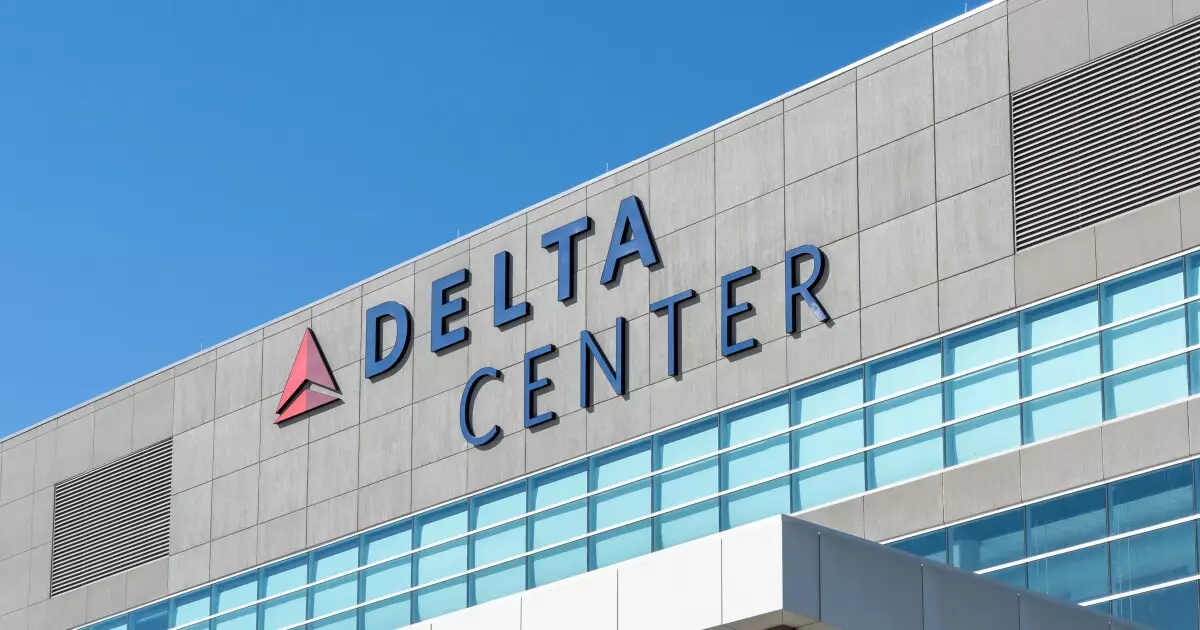In the dynamic landscape of municipal finance, the forthcoming $900 million sales tax revenue bond issue by a Utah debt issuer could be viewed as both a beacon of hope and a source of trepidation for Salt Lake City. Designed to fund renovations at Delta Center—a site that has evolved from a basketball-exclusive arena into a dual-use venue for both hockey and basketball—the decision to embark on this massive investment underscores a larger narrative about the identity and economic future of urban centers. This bond deal, backed by optimistic revenue projections from a slight sales tax increase, invites scrutiny beyond mere numbers, demanding a rigorous examination of its implications.
Salt Lake City’s decision to authorize an additional 0.5% sales tax—a measure expected to generate around $1.2 billion over 30 years—reveals an intrinsic tension between short-term gains and long-term sustainability. Those who back the initiative argue that revitalizing the downtown area and enhancing the city’s appeal will ensure steady revenue growth. However, history has shown that such ventures often come with strings attached. If the anticipated influx of visitors and spending fails to materialize—particularly if professional sports franchises falter or depart—the financial burden may fall on the very taxpayers who once heralded the project.
The Role of Professional Sports in Urban Development
Salt Lake City is placing a significant bet on the economic allure of professional sports. By investing $525 million of these bonds into the Delta Center—home to the Utah Jazz and the Utah Mammoth—city officials envision a vibrant cultural hub that will draw both local residents and tourists alike. Yet, one must question whether this reliance on high-stakes sports is prudent. The initial excitement surrounding new teams can eventually fade, leaving cities with empty arenas and broken economic promises.
The bond proceeds not only finance renovations but also aim to create a “sports, entertainment, culture, and convention district,” a nearly utopian vision that seems to overlook the reality of shifting consumer habits. In a world increasingly influenced by digital entertainment and remote work, the desire for live sports may not sustain the broader economic implications that proponents tout. If the Delta Center fails to establish itself as a cornerstone of community engagement, much like the failed initiatives in other American cities, the financial model could prove to be a fundamentally flawed gamble.
Investors’ Perspectives: Risks and Rewards
Investors should approach this bond deal with caution, despite the allure of a tax-exempt offering. Moody’s A1 rating, endorsed by the projected growth of sales tax revenues and the robust economic stability of Salt Lake City, creates an optimistic backdrop for potential buyers. However, this rating does not come without caveats; there is a clear warning regarding the potential repercussions of a downturn in economic conditions or a decrease in revenue generation. The stark reality remains: the market is fickle and dependent on factors beyond municipal control.
The closed lien structure also raises eyebrows among discerning investors. The necessity of limiting financial support to the pledged revenue introduces risk if unforeseen circumstances arise—like the relocation of professional sports teams or prolonged economic downturns. Financial analysts assert that if the generated tax revenues do not meet projections, the city may find itself scrambling to cover the costs without the necessary resources.
The Broader Implications for Urban Finance
Salt Lake City’s approach to financing infrastructure through municipal bonds is emblematic of a broader trend in urban centers, where local governments are increasingly willing to stake their futures on public-private partnerships and sports-related projects. While it can be argued that such developments invigorate local economies and enhance quality of life, there is an urgent need for a critical assessment of this model’s sustainability.
The complexities of municipal financing demand a more integrated dialogue about risk management and investment strategy. Municipal leaders must not only champion the immediate benefits but also plan for the potential long-term downsides. If Salt Lake City wants to avoid falling into the cycle of debt that has plagued other cities investing heavily in similar ventures, planners must focus on a diversified economic strategy that accounts for the unpredictable nature of the global economy.
As Salt Lake City prepares to lavishly invest in its future through this monumental bond issuance, it finds itself at a crossroads. Will this be an unprecedented opportunity for growth, or a cautionary tale of misplaced priorities? The answer lies not just in financial metrics but also in the city’s ability to adapt to rapidly changing economic landscapes.

